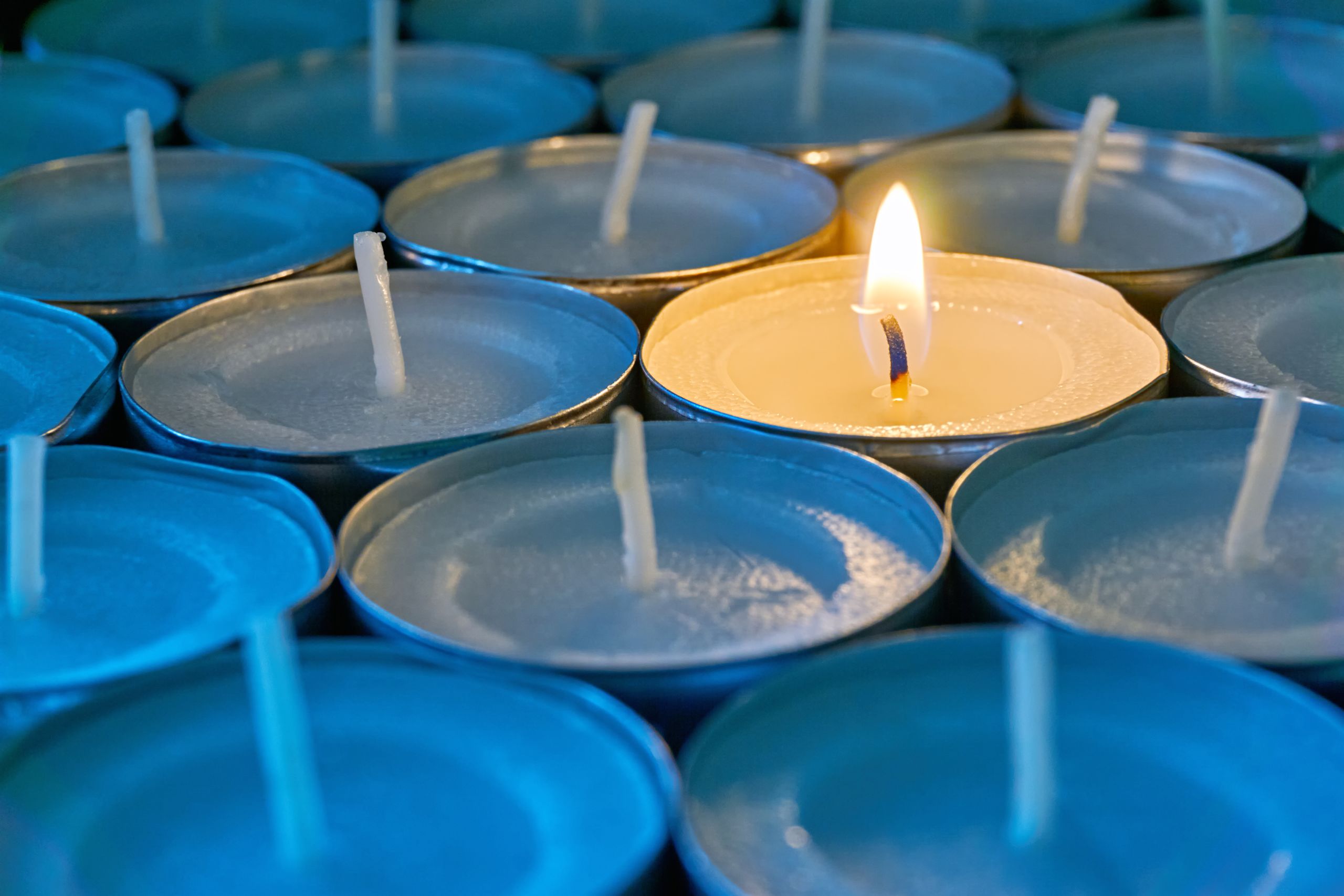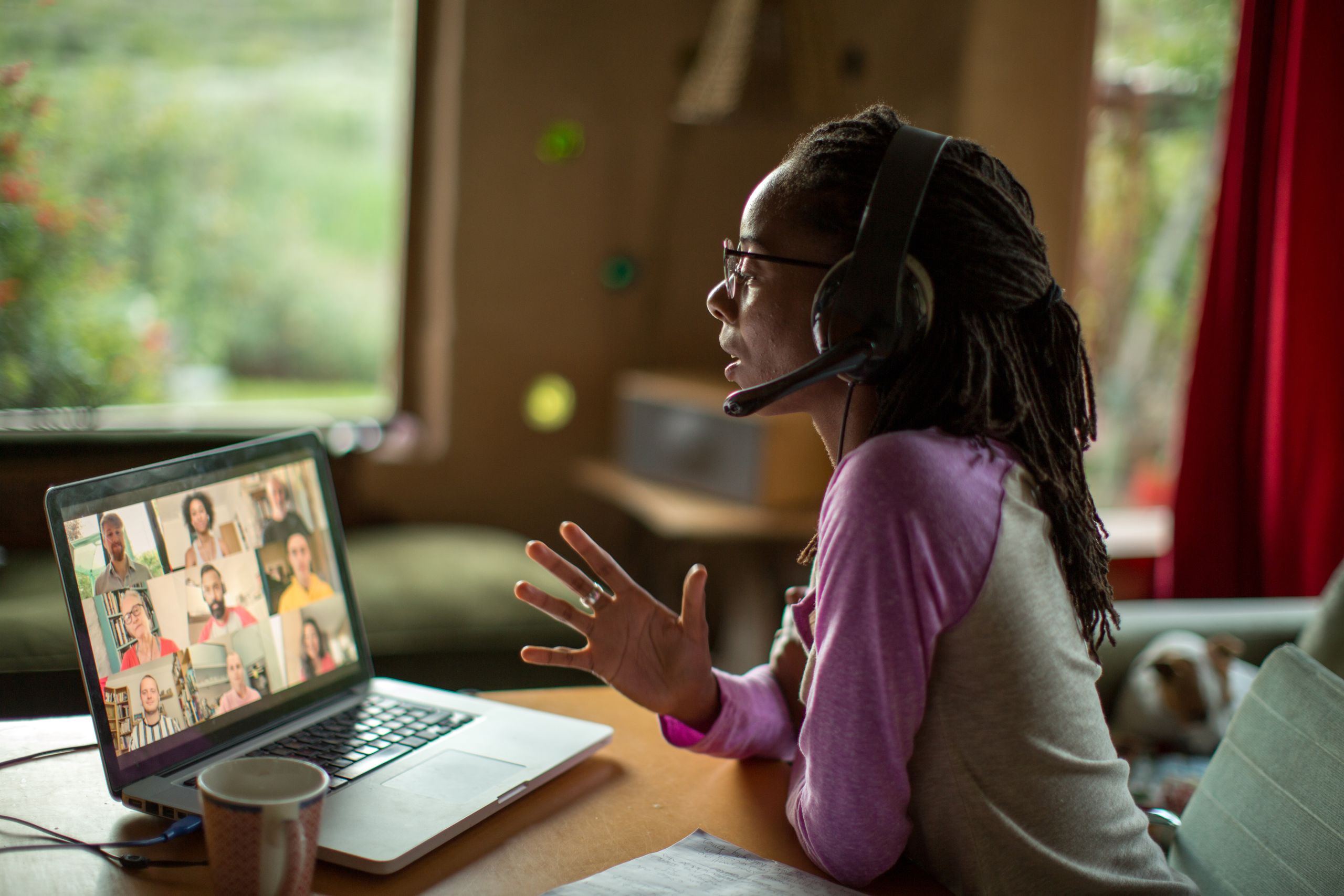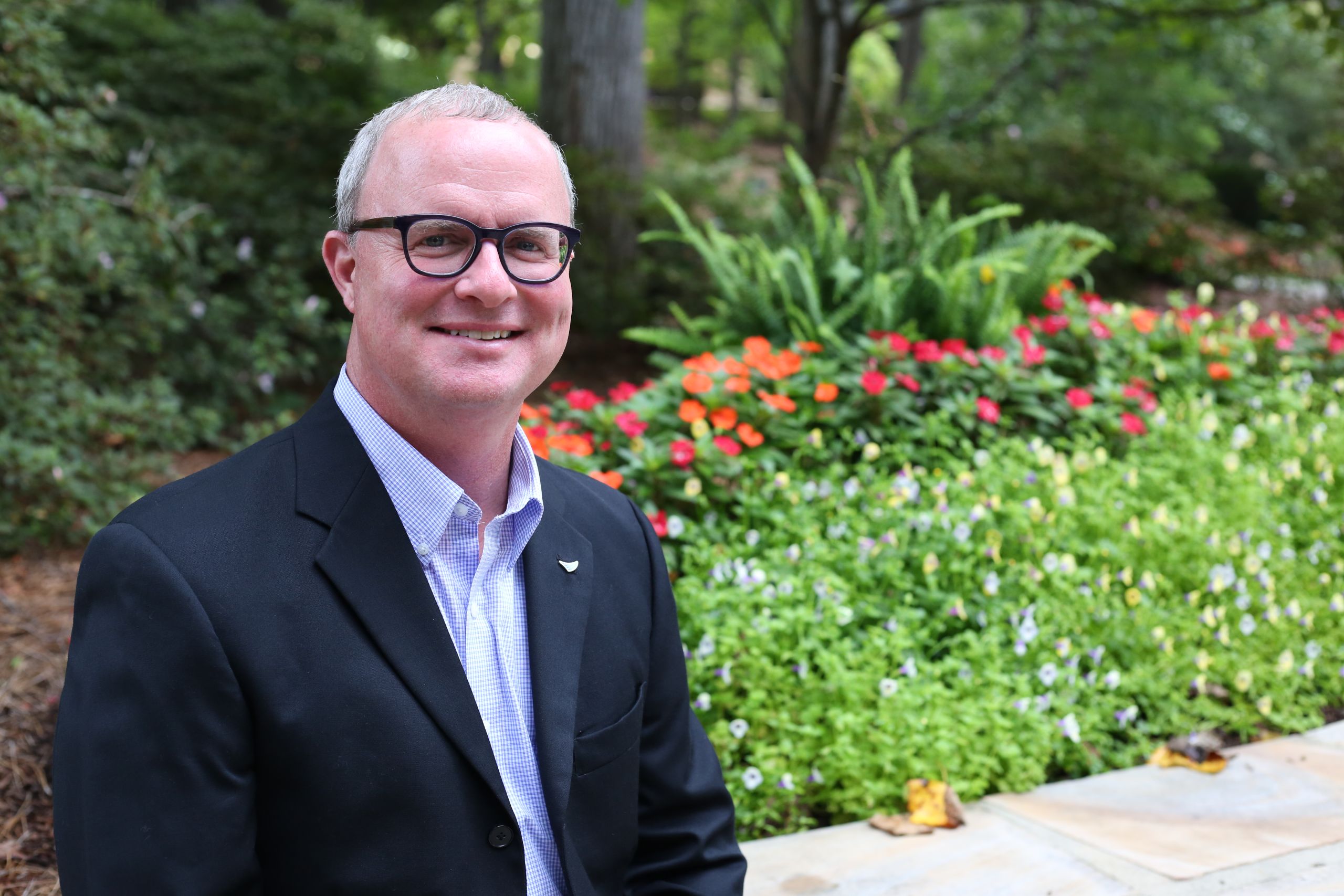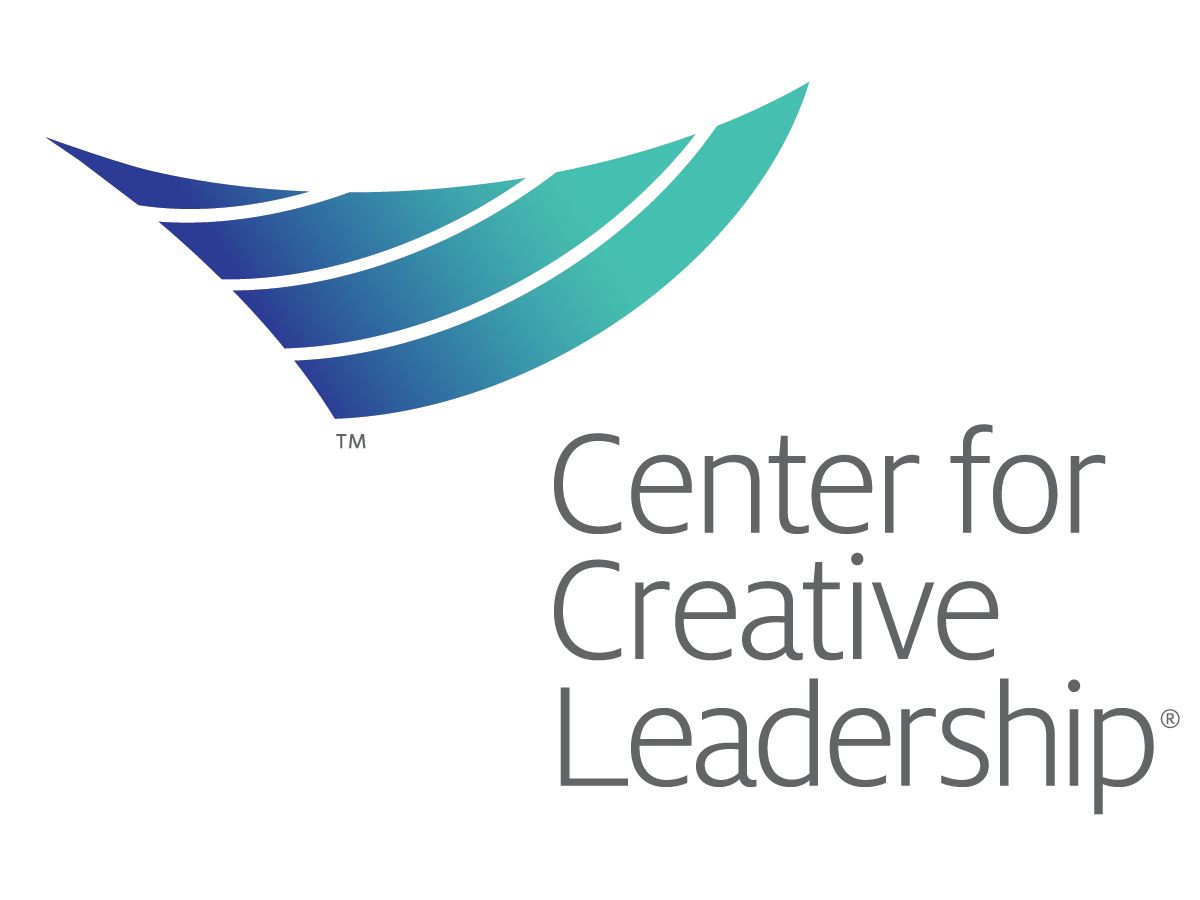It's Time to Break Up with Burnout. Here's How.

What is your current relationship status with burnout? Do you wish you could break up for good? You are not alone. Across the globe, individuals, organizations, and communities are experiencing increasing stress and uncertainty. The impact is staggering. A study from Mental Health America reports that 75% of workers have experienced burnout, with 40% saying it was a direct result of the coronavirus pandemic. Burnout is pervasive, and we are feeling the direct effects in the human services sector.
Saving the world is exhausting, and many nonprofit workers and the communities they serve are feeling even greater strain, compounding the already high levels of exhaustion and burnout. During this pandemic, leaders are being pulled in multiple directions in the face of physical, mental, social, and economic upheaval. With long hours and less funding, nonprofit leaders face burnout themselves and may not feel equipped to offer their teams strategies to become more resilient and effective. Leaders approaching or experiencing burnout may feel physical symptoms, cynicism about work, emotional exhaustion, and reduced performance. It’s not you. It’s burnout.

What can philanthropic organizations do to limit the nonprofit burnout rate and turnover? Grant-makers can bring intention and attention to creating the conditions for everyone to bring their best selves to work and foster an environment that supports nonprofits and the communities they serve.
Foundations can play several essential roles. First, grant-makers can consider their own personal and professional practices and how those are contributing to how they show up for their constituents. Second, they can stop doing anything that doesn’t support creating and cultivating the conditions for nonprofit teams and organizations to flourish.
Specifically, philanthropy leaders can STOP doing these 6 things to build their own resilience and help create the conditions for colleagues to “burn bright,” instead of burning out.
“The Burn Bright Program was a succinct and effective opportunity to pause, take stock, and implement changes to improve resiliency. I especially appreciated the ‘small steps’ approach to increase the likelihood of longer-term habits and success.”


STOP doing the same thing over and over … START trying something new.
- Do the conditions of the pandemic have you feeling like you live the same day over and over? Your personal “Groundhog Day!” In addition to boredom, unexamined routines can diminish energy and focus. Our brains actually thrive, and we feel happier, when we have novel experiences. Brain research has found that a rush of dopamine comes with any new experience. And it doesn’t have to be big! Our team members made a commitment to try new things and, for some of us, it was as simple as trying a new route on a morning walk. We all noticed that even small changes can help to create an immediate shift in energy and focus.
- How much are you mindlessly defaulting to behaviors reinforced by the pandemic conditions? What might you do that is new today? How might you encourage others to try something novel? Perhaps add sharing new things tied to your one-on-one check-ins or an upcoming team meeting.
STOP holding your breath … START an intentional breathing practice.
- You might not even notice that you hold your breath or take very shallow breaths during the day, especially when you feel pressure. The moment we get anxious or stressed, we can assume some control and agency by breathing properly. Even less than a minute of intentional breathing can make a big difference. The research is clear: if we breathe shallow and fast, it causes our nervous system to up-regulate, and we feel even more tense and anxious. But if we breathe slowly, with a focus on exhaling, it turns on our body’s anti-stress response. Breathing is convenient, free, and you already know how to do it!
- One simple practice is to anchor intentional deep breathing to something you do every day — maybe just before joining another online meeting, or as you transition from work to home tasks. You might experiment with expanding this practice to include everyone participating in a meeting you are hosting. Simply allow one minute for everyone to breathe fully at the start or take a breathing break in the middle.
STOP sending generic thank you messages … START personalizing gratitude.
- Have you ever received a generic, “reply-all” thank you message that fell a little flat? You’re not alone. While the intent is positive and it’s better than no gratitude, the impact often falls short. Research finds that personal notes that include details about the value of an individual’s contribution are far more effective than mass communications; just 5 - 12 formal, individualized, sincere gestures of thanks per year can significantly cut an employee’s propensity to leave.
- Take a couple of minutes and write a 2- to 3-sentence thank you note to a person that you’ve been meaning to thank at work. Model this behavior for other leaders in your organization. Make it your practice to send each of your grantees a brief personalized thank you note at the completion of each project.

STOP defaulting to meetings as usual … START being more intentional about meetings.
- Meetings are a constant presence in our lives, in some cases now more than ever. Yet meetings can be draining, feel like a waste of time, and force after-hours work, in addition to being too long, exhausting, and even isolating when there’s not an opportunity to connect. Meetings are critical to getting our work done, though, so a good place to start is to take some time to really examine your meeting culture.
- Ask the question, Is this meeting necessary, or are we simply defaulting to a meeting because that’s how we’ve always done it? Think about if you can handle the agenda via email or shorten the allotted time. This allows people to avoid attending back-to-back meetings all day. And what about those virtual meetings? Can some of those be audio only (remember when we used to do that?) or even better, be an opportunity for a walk and talk, maybe in person together, outdoors? Meetings are a prime opportunity for connection; make them count.
STOP perpetuating a 24/7 work week … START encouraging boundaries.
- How have your boundaries around work and home shifted over the course of the pandemic? For many of us, we no longer “work from home” as much as we “live at work.” A boundary-less experience like this can take a serious toll on our health and contribute to burnout. How might you be intentionally or unintentionally creating expectations of working longer hours, including when employees typically have been untethered from work?
- Notice the communication patterns that have emerged for yourself and your team. If you find yourself often catching up on emails after hours, reflect on this habit. How might you create or influence new expectations that support recharging and disconnecting from work? How can you actively support both a work ethic and a “rest ethic”? And what rituals can you start that signal you are “clocking out”? Consider closing the laptop and leaving it in a workspace, collecting files and putting them into a folder, or sending your team a friendly “I’m out and you should be, too” email at the end of the day or week.
STOP checking your phone and having caffeine first thing in the morning … START your morning with intentional, mindful movement.
- Do you check your phone before your feet hit the floor in the morning? Is making coffee or tea your next step after that? These behaviors may be eroding your energy before your day even begins. Checking work email, social media, and texts as soon as your eyelids open quickly hijacks your attention and emotions, often triggering anxiety before you’ve even gotten out of bed. You’ve probably already heard the advice not to keep your smartphone in your bedroom – but turning off notifications, unfollowing, and removing as many apps off your phone as possible are all helpful, too.
- As for your unexamined caffeine routine, simply delay it a bit. When you wake up, the energizing hormone cortisol is at its peak – adding caffeine on top of that is like throwing a match on a fire that’s already crackling. You’ll experience a greater boost by waiting an hour or 2 if you can. Replace that immediate screen time and caffeine jolt with a little movement — a quick walk, some yoga, or even just stretching – and then something mindful like journaling, reading, or listening to music for a few minutes. Then, hydrate with water before you caffeinate. Give it a try for a few days and see if your energy improves.
When you stop personal and organizational behaviors that aggravate stress and burnout, you can start building a culture that values resilience and gives employees permission to take care of themselves and recharge. And say goodbye to burnout for good.
“The Burn Bright program helped me take small steps, reminding me to take a break and build resilience within myself. Specifically, it gave me very practical, daily tactics that had a big impact on myself and how I manage my team."
At the Center for Creative Leadership, we talk about how individual and organizational resilience is built over time. As a nonprofit ourselves, we are guided by purpose and fueled by passion, and we understand the need for strong, resilient leaders in mission-driven organizations. Modeling behaviors that promote recharging will help create the conditions for employees to bring their best selves to work (and home) with greater frequency, break up with burnout, transform your leadership culture, and build a more resilient organization.

LEARN MORE:
Virtual Program:
Burn Bright: The Resilience Advantage is an online course using a scientific, application-based approach to help leaders bring the best versions of themselves to their work and communities. Learn more and register.
How We Can Help:
To learn about how CCL partners with foundations to build leadership capacity for greater societal impact, visit our foundations webpage.

[WRAP-LEFT] Andi Williams, Director of Population Health Sector Portfolio, Center for Creative Leadership
[WRAP-LEFT] Andi Williams, Director of Population Health Sector Portfolio, Center for Creative Leadership
As director of our Population Health sector portfolio, Andi Williams designs and delivers transformational leadership development experiences to leaders at every level, with particular focus on health leaders. For ten years she served as Deputy Director of the RWJF-funded Executive Nurse Fellows program, a world-class leadership development program enhanced the effectiveness of nurse leaders to impact health and health care in the United States. Before joining CCL, Andi was a research associate at Wake Forest University School of Medicine Department of Public Health Sciences. Andi lives in Winston-Salem, NC with her husband and children. Her mission is to show care, compassion, and kindness to all people (including herself!).

[WRAP-RIGHT] Pete Ronayne, Senior Faculty member and Portfolio Manager, Center for Creative Leadership
[WRAP-RIGHT] Pete Ronayne, Senior Faculty member and Portfolio Manager, Center for Creative Leadership
Pete Ronayne is a Senior Faculty member and Portfolio Manager, where he focuses on public sector leadership, resilience, and organizational development. Before joining us, Pete spent 15 years as a dean and senior faculty member at the Federal Executive Institute (FEI) in Charlottesville, Virginia. Pete has worked across the full range of the federal sector, designing and delivering programs and presenting in the areas of neuroscience and leadership, leading change, global leadership, leading across generations, and the future of public service and governance. An adjunct professor and advisory board member at several leading universities and institutes, Pete speaks extensively on neuroscience and leadership as a keynote presenter and speaker at conferences and leadership meetings.
This content was paid for and created by the Center for Creative Leadership. The editorial staff of The Chronicle had no role in its preparation. Find out more about paid content.



